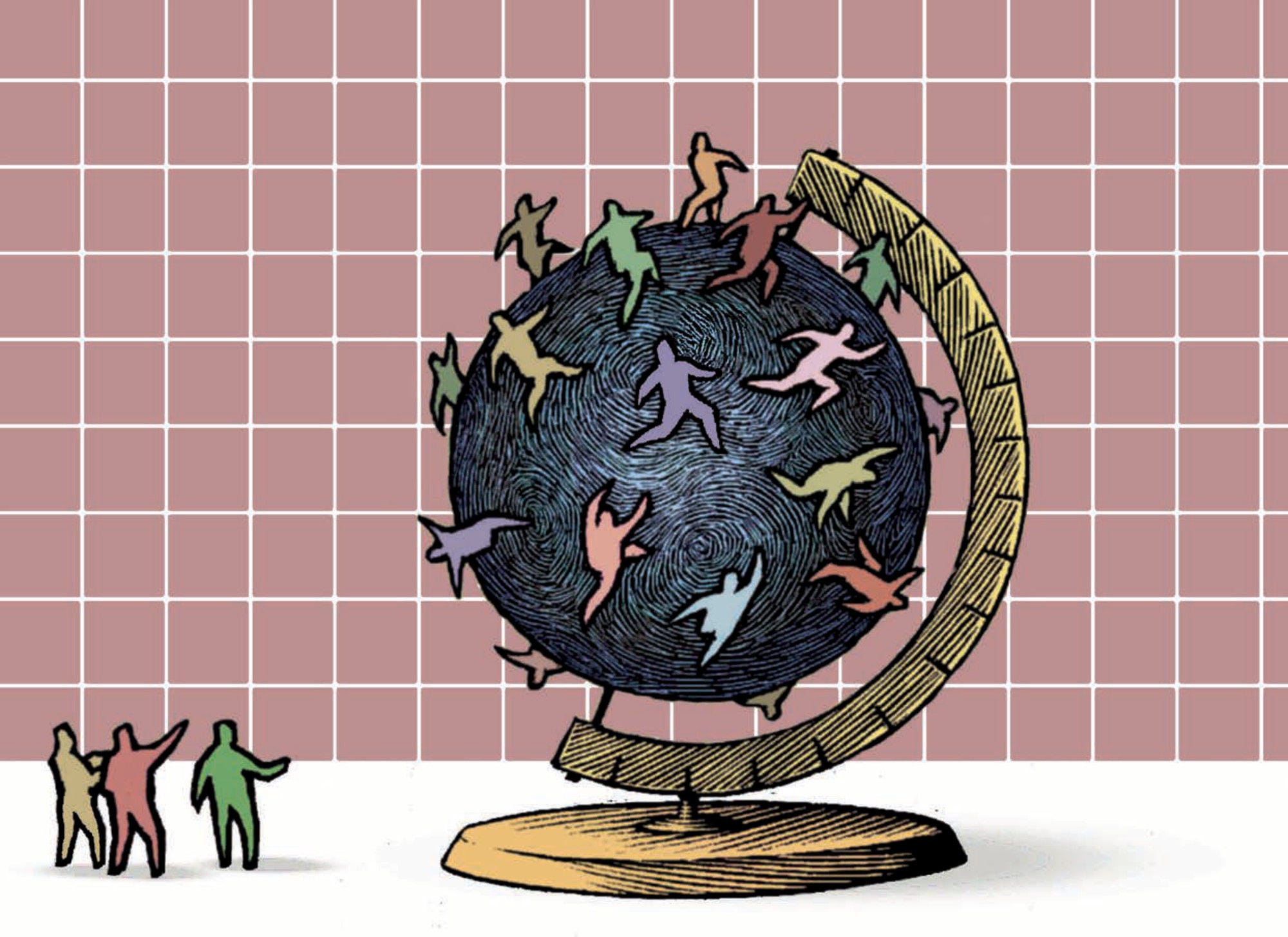The 2024 edition of International Migration Outlook analyses recent developments in migration movements and the labour market inclusion of immigrants in OECD countries. It also monitors recent policy changes in migration governance and integration in OECD countries. This 48th edition includes one special chapter on migrant entrepreneurship. The Outlook also includes country notes and a detailed statistical annex.
International Migration Outlook 2024

Abstract
Executive Summary
Migration flows are at a new record high in 2023
Copy link to Migration flows are at a new record high in 2023In 2022 already, migration flows reached unprecedented levels with around 6 million new permanent immigrants (not counting the 4.7 million Ukrainian refugees). This was driven by a multitude of factors, including a catching-up effect post COVID‑19 pandemic, growing labour shortages emerging from the strong economic recovery and the onset of demographic changes in OECD countries, and a number of specific country situations such as for example in the United Kingdom and New Zealand.
With 6.5 million new permanent-type immigrants in the OECD area, 2023 set a historic new record. Most of the 2023 increase was driven by family migration (+16%), but humanitarian migration (+20%) was also on the rise.
After an unprecedented increase in 2022, temporary labour migration to OECD countries also continued to grow. More than 2.4 million work permits and authorisations were granted in OECD countries (excluding Poland) representing a 16% year-on-year increase (28% above pre‑COVID levels). In Poland, excluding “entrusting work” declarations for Ukrainians, the total number of new work authorisations (including renewals) decreased by 39% in 2023, to 835 000. What is more, international student flows also continued to rise (+6.7%) to reach over 2.1 million new permits in 2023.
The number of new asylum seekers to OECD countries also broke a new record in 2023, with 2.7 million new applications registered across OECD countries (+30%). The surge was largely driven by the United States. Altogether, OECD countries granted international protection to 676 000 refugees in 2023 (+15%) – the highest level since 2017. This includes 160 000 new resettled refugees (+23%), the highest number since 2016.
Labour market outcomes of immigrants continue to be at record levels
Copy link to Labour market outcomes of immigrants continue to be at record levelsThe post-pandemic upward trend in immigrant employment continued into 2023, with the OECD overall seeing both historically high levels of employment and low levels of unemployment, at 71.8% and 7.3%, respectively. 10 OECD countries, including Canada, the United Kingdom and the United States, as well as the EU27 overall, had the highest immigrant employment rates on record.
The extent to which Ukrainian refugees have been able to integrate into local labour markets has varied greatly between countries. In certain Central and Eastern European countries (e.g. Poland, Lithuania and Estonia), they fare particularly well, with employment rates exceeding 50% in late 2023. In contrast, in countries such as Germany, Austria and Belgium, less than one in four have been employed.
Migration management increasingly requires a delicate balance
Copy link to Migration management increasingly requires a delicate balanceRecord-high immigration levels in many OECD countries have placed pressure on migration systems. In response to high demand on public reception infrastructure, countries continue to tighten asylum legislation. Some of the main destination countries have also begun imposing restrictions on other legal migration pathways to curb immigration and ease pressure on the housing market and on public services. At the same time, skill shortages and demographic challenges continue to fuel interest in labour migration and require countries to strike a balance between restriction and attraction, to remain competitive destinations for foreign workers and international students.
New milestones have been reached in regional co‑operation in migration management. At the EU level, the Pact on Migration and Asylum was adopted following years of negotiation. In the Americas, countries made additional commitments to deepen their collaboration under the Los Angeles Declaration on Migration and Protection.
Regarding integration policies, several OECD countries, including Iceland, Lithuania, Poland and Slovenia have revised or are developing new and broader integration strategies. In many countries, however, the focus has been on improving capacity to deliver integration services, with a focus on promoting active participation and improving access. Enhanced civic integration activities are being promoted, focusing on identity, sense of belonging, anti-discrimination, attitudes, and values. The issue of housing is also increasingly at the forefront of concern for reception and integration policy.
Migrant entrepreneurs
Copy link to Migrant entrepreneursThe weight of immigrants among entrepreneurs has increased significantly in OECD countries over the past 15 years. In 2022, 17% of the self-employed in OECD countries on average were migrants, up from 11% in 2006.
This increase translated into significant job creation. There are an estimated additional 0.2 jobs in the economy per additional migrant in the working age population through entrepreneurship, on average across 25 OECD countries. Migrant entrepreneurship added almost 4 million jobs from 2011 to 2021.
While immigrants are over-represented among the founders of some of the most successful firms in the OECD, in practically all countries immigrant firms are smaller than those of the native‑born, with similar demographic characteristics and operating in the same sectors. Nonetheless, immigrants are more likely than the native‑born to be own-account workers, to be in false self-employment and to participate in the gig economy.
Few OECD countries have services targeted at immigrants within their mainstream services to support entrepreneurship, but immigrants tend to have access to national programmes and initiatives virtually everywhere.
Key findings
Copy link to Key findingsIn 2023, more than 150 million people living in OECD countries were foreign-born. The United States alone hosted nearly a third of them. In the ten years leading up to 2023, the share of foreign-born in OECD countries rose from 9% to 11%.
Permanent-type migration to OECD countries set a new record in 2023 with 6.5 million new permanent immigrants, a 10% year-on-year increase, and 28% above 2019 levels. While most categories of migration registered increases, free mobility is a notable exception.
About a third of OECD countries experienced record immigration levels in 2023, particularly the United Kingdom, but also Canada, France, Japan and Switzerland. Another third recorded a drop in inflows, including New Zealand, Israel, Italy, Denmark, Estonia and Lithuania.
Most categories of temporary labour migration increased in 2023, notably seasonal migration (+5%), and Working Holidaymakers (+23%). In contrast, inflows of Intra-company Transferees decreased by 11% in 2023.
For the first time, the number of asylum applications in the United States (more than 1 million) surpassed those in European OECD countries taken together. The top origin countries for asylum applicants within the OECD in 2023 were Venezuela (270 000), Colombia (203 000), Syria (171 000), and Afghanistan (150 000). They were followed by Haiti, Cuba, Türkiye and Nicaragua.
In the same series
Related publications
-
 4 September 2024
4 September 2024 -
 28 June 2024
28 June 2024 -
 11 June 2024
11 June 2024








